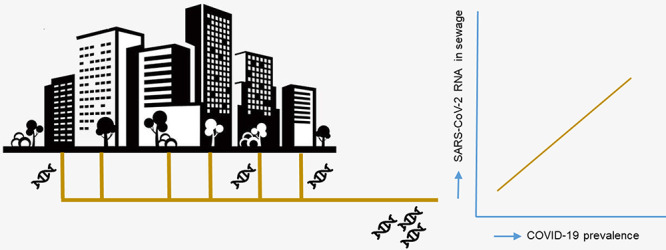- Record: found
- Abstract: found
- Article: not found
Presence of SARS-Coronavirus-2 RNA in Sewage and Correlation with Reported COVID-19 Prevalence in the Early Stage of the Epidemic in The Netherlands

Read this article at
Abstract

In the current COVID-19 pandemic, a significant proportion of cases shed SARS-Coronavirus-2 (SARS-CoV-2) with their faeces. To determine if SARS-CoV-2 RNA was present in sewage during the emergence of COVID-19 in The Netherlands, sewage samples of six cities and the airport were tested using four qRT-PCR assays, three targeting the nucleocapsid gene (N1–N3) and one the envelope gene (E). No SARS-CoV-2 RNA was detected on February 6, 3 weeks before the first Dutch case was reported. On March 4/5, one or more gene fragments were detected in sewage of three sites, in concentrations of 2.6–30 gene copies per mL. In Amersfoort, N3 was detected in sewage 6 days before the first cases were reported. As the prevalence of COVID-19 in these cities increased in March, the RNA signal detected by each qRT-PCR assay increased, for N1–N3 up to 790–2200 gene copies per mL. This increase correlated significantly with the increase in reported COVID-19 prevalence. The detection of the virus RNA in sewage, even when the COVID-19 prevalence is low, and the correlation between concentration in sewage and reported prevalence of COVID-19, indicate that sewage surveillance could be a sensitive tool to monitor the circulation of the virus in the population.
Related collections
Most cited references15
- Record: found
- Abstract: found
- Article: found
Clinical Characteristics of 138 Hospitalized Patients With 2019 Novel Coronavirus–Infected Pneumonia in Wuhan, China
- Record: found
- Abstract: found
- Article: not found
Epidemiological and clinical characteristics of 99 cases of 2019 novel coronavirus pneumonia in Wuhan, China: a descriptive study

- Record: found
- Abstract: found
- Article: found
